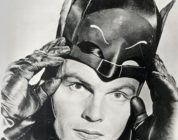In one Batman novel, he said that violence is the language of thugs and bullies, and that one should be fluent for when reason doesn’t work.
Hybrid martial arts styles are nothing new. One of the earliest examples was E.W. Barton-Wright’s Bartitsu, which combined boxing with jujutsu, savate, and cane fighting during the Victorian era in England. Another was the style of Kajukenbo (Karate, Jujutsu/Judo, Kenpo, Boxing) from Hawaii in the 40’s, and the most well-known is Bruce Lee’s Jeet Kune Do philosophy of learning and perfecting what works for you. I personally have belts in Judo, Karate, and Wushu, and have had informal training in Capoeira, Wing Chun, and contemporary Jeet Kune Do. Cross-training is part of most martial artists’ lives, and some of the results can be seen in MMA and military styles.
Batman has always been known as a master martial artist, but exactly what he studied is rarely clarified. Often, it was just said that he studied 127 different styles and left at that. However, with the publication of DK Publishing’s guidebook Batman: The World of the Dark Knight, it’s actually listed which martial arts are the core styles Bruce Wayne uses. So, let’s take a look at what they are, and why Batman would use them. (warning: Long article ahead)
Long/Medium Range: Long and medium often refers specifically to the furthest that the hands and feet can reach for the attack. Expect attacks in this range to be used to keep opponents at a distance.
Shotokan Karate: The most well-known of Japanese Karate (which translates to Empty Hand), Shotokan is traditionally seen as a hard style. Hard styles mean that they meet force with force, while soft style is more about negating an opponent’s force with redirection. Shotokan’s long reaching punches and kicks, coupled with its solid, hard-striking blocks, would be useful for incapacitating foes on the attack.
Capoeira: This Brazilian style is often dismissed due to the flashy nature of its demonstrations, where practitioners often leap, flip and kick high in the air. This aspect of the art is due to it being disguised by the slaves that created it as a dance, so their oppressors would not know they were training to protect themselves. Capoeira not only is a good way to exercise, but the fact that it uses primarily legs helps if one’s hands are tied. Also, its tendency to both dodge attacks, and turn attacking momentum into a chance to counter with a swinging leg makes it one hell of a way to turn the tables on an opponent.
Savate: This French kickboxing style may not seem like much when compared to other kickboxing styles, but it is the only one I’ve heard of where training with shoes on is mandatory. Its kicks only strike with the foot, meaning that for someone wearing combat boots like Batman, its techniques take full advantage of the protection shoes give.
Close Range: The idea of close range is often confined to the use of fists and feet in a way that balance is maintained, and an opponent can’t penetrate the defense. It’s also where often the shorter ranged weapons of the elbows, knees and head can be utilized.
Western Boxing: The Sweet Science of pugilism is often dismissed when there are so many Asian styles that do more than simply punch. Boxing, however, is a great style for learning footwork that allows you to get in, strike quickly and get out. Its versatility of punches, including long shots like the cross or in-close moves like the hook allows it to make an opponent regret trying to trade blows with a trained practitioner. And its defense, while not fancy, works when one is trapped and has to take a few blows head-on. Batman was trained in boxing by legendary super hero Wildcat, meaning he knows all the good street-savvy moves that boxing can offer.
Muay Thai: This style of kickboxing from Thailand is one of the most brutal styles in the world, mixing the moves of boxing with powerful kicks. Unlike savate, where the foot is the only weapon of the legs, Muay Thai uses the devastating shin kick, a move that when executed right (using the hips and legs together for maximum power) can shatter bone. Its use of knees and elbows when in close can not only add to the bone damage, but cause internal damage as well. One of the worst places a person can be is in a clinch with a Muay Thai user, because without the proper defensive moves, he’s going to destroy your torso before you can break his grip.
Wing Chun Kung Fu: The style of Wing Chun is the most well-known form of Southern Chinese Kung Fu. While Northern China, due to its terrain, uses more leaps and long reaching kicks and strikes, Southern Chinese styles focus on strong legs and stances, and fast, powerful hand attacks. Wing Chun is a soft-and-hard style, developed primarily for self-defense that could be learned quickly. Famous practitioners like Bruce Lee and his master Ip Man made it world famous, and for good reason. With its low-line kicks for unbalancing an opponent, its soft-style redirecting defense, its philosophy of defending and attack at the same time, and its rapid-fire punches, it’s great for protecting one’s self. Iconic of it is its use of non-committal attacks (meaning if it’s blocked or deflected, balance and momentum is not lost), the centerline theory (that all attacks come from the center of your body, and strike the opponent’s center for maximum impact), and its sticking hands and trapping techniques (allowing you to feel how your enemy moves as you defend, and then trap his arms and leave him open for counterattack) make it perfect for defending yourself if your opponent gets close and you have no room to escape.
Okinawan Goju-Ryu Karate: Much of old Karate came from the island of Okinawa, and Goju-Ryu (translated: Hard-Soft Style) is one of the best. Using a combination of hard and soft techniques for both defense and attack, Goju-Ryu’s core philosophy is that there is no single answer to all situations, and it takes knowledge of when to use what to succeed, both in combat and in life. Fun fact: Goju-Ryu and its founder, Miyagi Chojun, were the basis for the character of Mr. Miyagi from the Karate Kid films.
Panantukan: This is often called Filipino boxing, but a more accurate term would be Filipino street-fighting. It’s similar to Wing Chun in how it deflects attacks and strikes quick, but while Wing Chun attacks from the center, Panantukan attacks from the outside angles. While Wing Chun only uses the hands and feet to attack, Panantukan uses elbows, shoulders and headbutts. It’s basically a dirty style of Wing Chun, which is why it would complement it so well.
Grappling: The grappling range occurs when one is too close for strikes, thus resulting in the need for throws, locks, and submission-based moves. Also, in the case of Batman, who often wants to force criminals to talk, or take out some opponents without causing too much damage, it helps to have these tactics.
Judo: Literally meaning the gentle way, Judo was created from Jujutsu, but focusing primarily on the throws, joint-locks, and pins without the use of striking. Its use of throws like the hip-toss and over-the-shoulder throw can take down opponents without causing more damage than a regular fall would cause would help Batman take down untrained foes with minimal effort.
Brazilian Jiu-Jutsu: This style was created after Judo was brought to Brazil by Mistsuyo Maeda, and it mostly focuses on taking down an opponent to the ground and using ground-fighting and submission moves like joint-locks and chokeholds. The core idea behind BJJ is that a large opponent’s strength is negated when taken to the ground, where an experienced grappler can maximize force by using mechanical strength rather than physical strength. For Batman, who often faces physically imposing foes, this is a great option to have.
Sambo: This Russian grappling style has plenty in common with Judo and Jujutsu, but also, in the militaristic sub-style of Combat Sambo, includes strikes and tactics for use against armed opponents, including those with firearms. Simple enough to imagine why Batman would add this to his arsenal.
Weapons: Yes, Batman doesn’t kill, but he does have extensive weapon knowledge. All hybrid martial artists should have some weapon knowledge to round off their arsenal, because you never know if you’ll need to counter other weapons.
Fencing: Bruce Lee demonstrated that fencing can add to your bare-handed style with both its footwork and its tactics, and I’ve seen people, Lee included, improvise using thin sticks or car antennae as make-shift fencing swords, which strike fast and often. However, I think Batman added this not because he foresaw sword-fights with Ra’s al-Ghul or the Cavalier in his future, but because his childhood hero was Zorro, and honestly, any aspiring martial artist is going to try to emulate their heroes at some point.
Kobudo: Technically, this means “old martial way”, but in contemporary times, this refers to the practice of Japanese weapons, including the katana sword, bo staff, sai daggers, nunchaku flail, kusarigama or scythe and chain, and the tonfa, to name some of the more well-known ones. Again, the ability to improvise these weapons is key, as the tactics and moves associated with them can be applied to improvised weapons. That, and I’m pretty sure some of the more intricate weapons in Batman’s utility belt have taken cues from this style.
Escrima/Kali: This is the Filipino form of weapon combat. Originally meant for use with short swords and knives, it’s often used today with stick and batons, as well as the still-contemporary use of knives. The major trademark tactic is called “Defanging the snake”, where you attack the opponent’s hand that’s holding his weapon. Escrima is great because nearly anything can be applied to its style, not just blades, but sticks, pens, books, plates, nearly any object that can be held in your hand can be used to fight off an opponent, whether he’s armed or not. It also can be used when you’re empty-handed to defend against a knife-wielding foe and even disarm him. This style also compliments nearly any martial arts training, including Jeet Kune Do and Wing Chun. It not only is used by Batman, but his associates, including Nightwing, whose escrima sticks are as iconic to him as batarangs are to the Dark Knight.
Keep in mind, this are just the core styles he uses, not including all the ones he’s studied and analyzed so he can recognize them and counter, or the individual techniques he may have trained on their own to add into his repertoire.
So, why not just train one? Mostly because having a well-rounded style in each of these ranges help compliment and prepare you for any fighting situation. For Batman, it’s about always being ready, and knowing exactly what to do to counter any threat. And while there are individual styles that people will train their whole lives, it’s fun to take what’s been established, blend them together, and create something that is uniquely your own.



